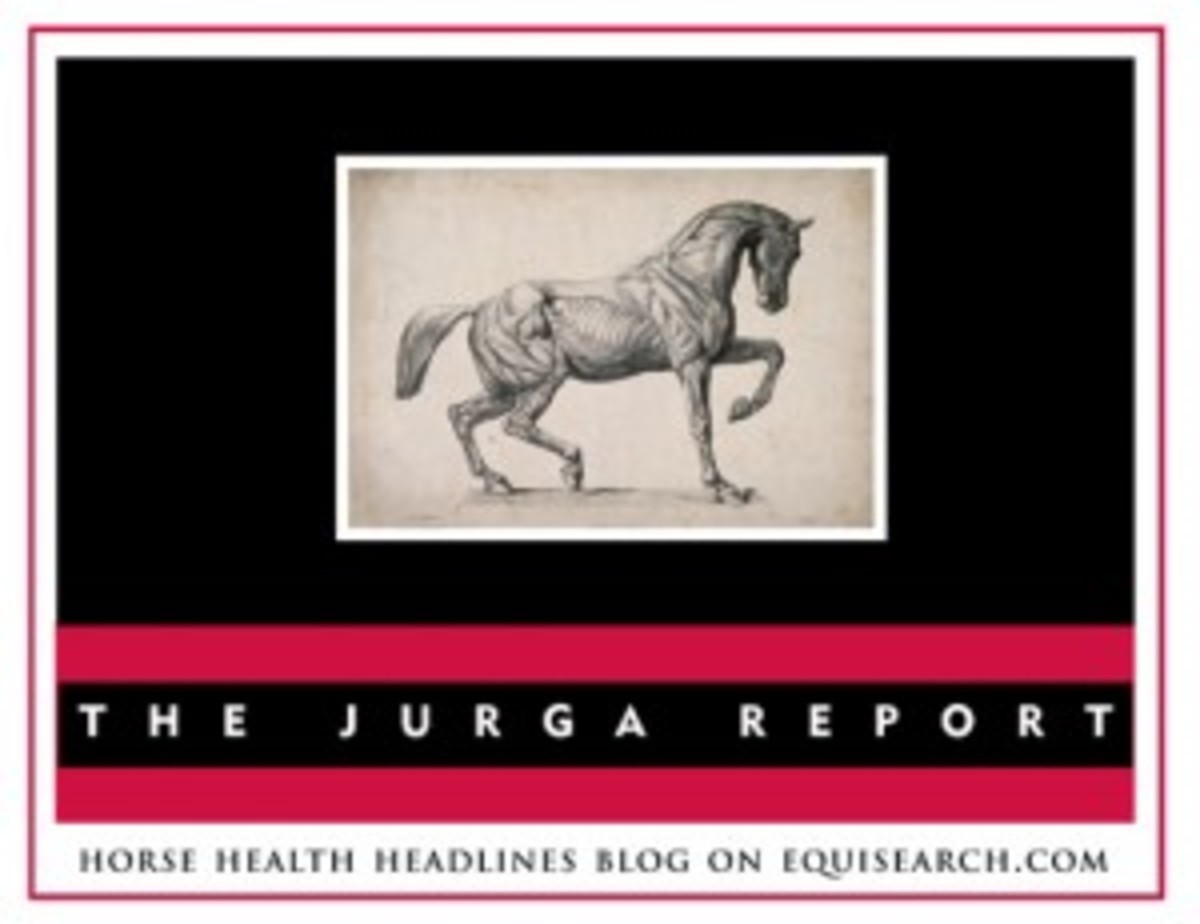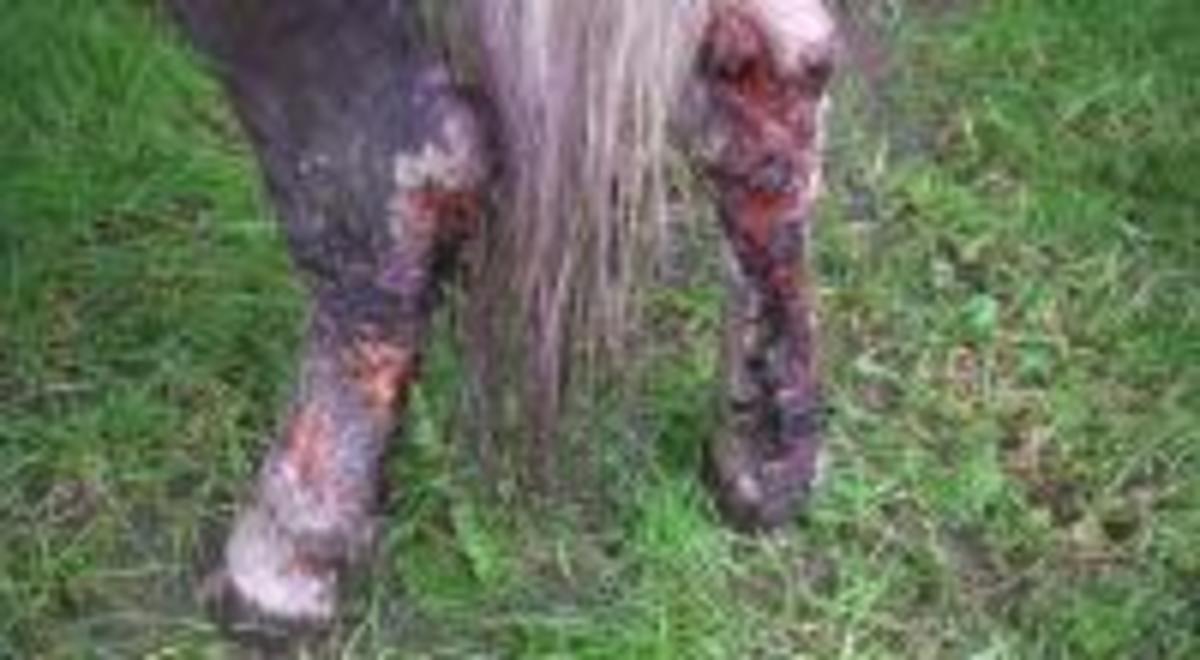Everyone talks a lot about abandoned and “rescued” horses. It’s a hot-button issue in the United States, where the termination of horse slaughter has been offered as a reason for the exponential number of so-called “unwanted” horses.
Unfortunately, horse abandonment and neglect is not isolated to the United States. It is a problem in many countries.

The drought that is crippling many parts of the United States is a key factor to consider at present. Authorities are predicting that a massive increase in the cost of hay nationwide, or a marked decrease in the quality of local hay fed to horses in drought-afflicted areas, will lead to malnutrition, emaciation and a surge in horse abandonment as winter approaches.
There is no question that ownerless horses need tender loving care and a boost to their nutrition when they come under the care of law enforcement authorities, rescue organizations or foster caregivers. But, at the same time, animal officials in local governments are charged with trying to find out whose horse they have in their care.

In some cases, the problem is compounded because the horses abandoned are suffering from health problems that have not been treated. Chronic laminitis is a common problem, and often has not been addressed.? On the other hand, the horse might be wearing expensive shoes that were applied months earlier and never reset. Finding out what veterinarian treated the horse’s problem, if one did, would be critical information to caregivers who want to avoid a recurrence of laminitis and would benefit from knowing what caused the initial problem and what the earlier prognosis had been.
Advanced thrush and canker, or deformed hooves and legs on foals and yearlings are also common in abandoned or neglected horses.
Many hoofcare and veterinary professionals will tell you that they have photographic memories when it comes to hooves they have worked on. They also may remember horses that were shown to them, whether in person or in photos, to ask advice for an advanced condition. Even unusual posture or behavior when on crossties can be helpful in identifying a horse’s origin or identity.
The likelihood that a horse receiving professional services will be abandoned is slim compared to those not-readily-visible horses that everyone knows are out there: the ones in a back field somewhere, or shut inside a barn. These are the emaciated ones that the owner doesn’t want the neighbors to see. These are the ones so lame they can’t even hobble out of the barn when authorities do arrive.
On the other hand, hooves can be the first line of investigation when trying to de-code the past of a rescued horse. Farriers and veterinarians can help by telling rescuers or investigators what they see in the hooves.
It is valuable information to rescuers to have an estimate of how long it has been since a horse received treatment or new shoes. It’s valuable to know that the shoes have been on for a given number of months, or that the horse is freshly shod. A farrier can easily tell if a horse was shod by a trained professional or if the shoes were nailed on by an amateur.

Many horses are quickly and cheaply shod to go through an auction. New shoes, even if they don’t fit, increase the perceived value of a horse when the potential buyer doesn’t know the difference. Auctioneers will often comment on the fact the horse is freshly shod and that it will save the new owner some money. On the other hand, pads can be nailed onto a horse going through an auction so that thrush or a stretched white line from chronic laminitis will be hidden.
Likewise, farriers will quickly notice if someone attempted to trim the hooves and left them ragged and unrasped, or if an old rasp was used. Professionals will be able to see that someone tried to help a horse–or if the attempt to trim or shoe a horse by an untrained person actually was a detriment to the animal’s condition.
Farriers also have signature shoeing styles. They recognized each other’s work by very subtle variations in nailing patterns, shoe brand used or how the clinches are secured. In some cases, the fact that a horse was not shod by a local farrier is important information.
It might be valuable information to authorities to know an approximate date of the last hoof maintenance, or to know whether expensive or handmade shoes were still on the horse or if the shoes nailed on were “right out of the box” and unshaped or unfinished, giving clues that the work was not done by a professional.
A farrier can tell you if a horse has been ridden or used a lot (or not), if it lives on soft ground or, based on hoof growth rates, when a ring on a hoof wall may have first appeared–or if telltale hoof rings have been rasped or sanded in an attempt to give the illusion of a smooth hoof wall.
In some cases, horses that show up in the care of authorities may actually have been shod by professionals who will easily recognize their own shoes. That’s what happened in 2008, when the?farrier team of Laura Felder and Kyle Deaver came forward and gave a positive ID of an abandoned horse in Oregon that was wearing their shoes.

In the Oregon case, not only were Laura and Kyle able to ID the horse–they had photographic records to prove that they had shod the horse, when they had shod it, and who owned the horse at the time. Most importantly, their photographic records showed the condition of the horse on the date they had last shod it. This is especially important for horses that have been sold or changed caregivers in the meantime.
In one of the most fascinating hoof forensics cases of all time, the FBI, the Secret Service and the New York Police Department tracked down the infamous Wall Street Bomber of 1921 by the fact that all that survived after the explosion of the suicide-bomber cart horse was its hooves and shoes. They had a lot to learn about horseshoes, but learn they did. Unique union identification stampings on the shoes were traced to a specific farrier shop in Manhattan and led to the arrest of the anarchist suspects.
Animal welfare officers and rescue organizations may not think to query local farriers and vets when trying to identify an abandoned horse or to obtain records on a horse in their care. But chances are that someone, somewhere knows that horse by its hooves or its conformational quirks.
Hoof forensics is far from an exact science and it has many stumbling points, including that farriers and veterinarians may be understandably reticent to become involved in welfare cases that involve legal proceedings.
But for some horses, it can be a lifesaving clue that will not only help their treatment and recovery but, in the case of prosecution for animal cruelty, possibly prevent the abuse of other horses.
At the very least, how to search for hoof-related clues can be easily taught and shared among horsecare professionals so that they can efficiently assist horses in need.
Do you have a story about how hoof-related information was used to help abandoned or rescued horses? Hoofcare Publishing in Massachusetts is compiling an archive of both documented cases and anecdotes from horsecare professionals, horse rescue organizations, legal professionals and law enforcement authorities. The goal is to both educate and to encourage those who can to share their knowledge what only they can “read” in a horse’s hooves and legs.
To share your story, send an email to Hoofcare Publishing. Your small effort to share what you know can help horses.
Contents of this blog ? Fran Jurga and The Equine Network. No reproduction without permission. Magnifying glass photo: Arild Nyb?,?mediebruket.no (Thanks!)








